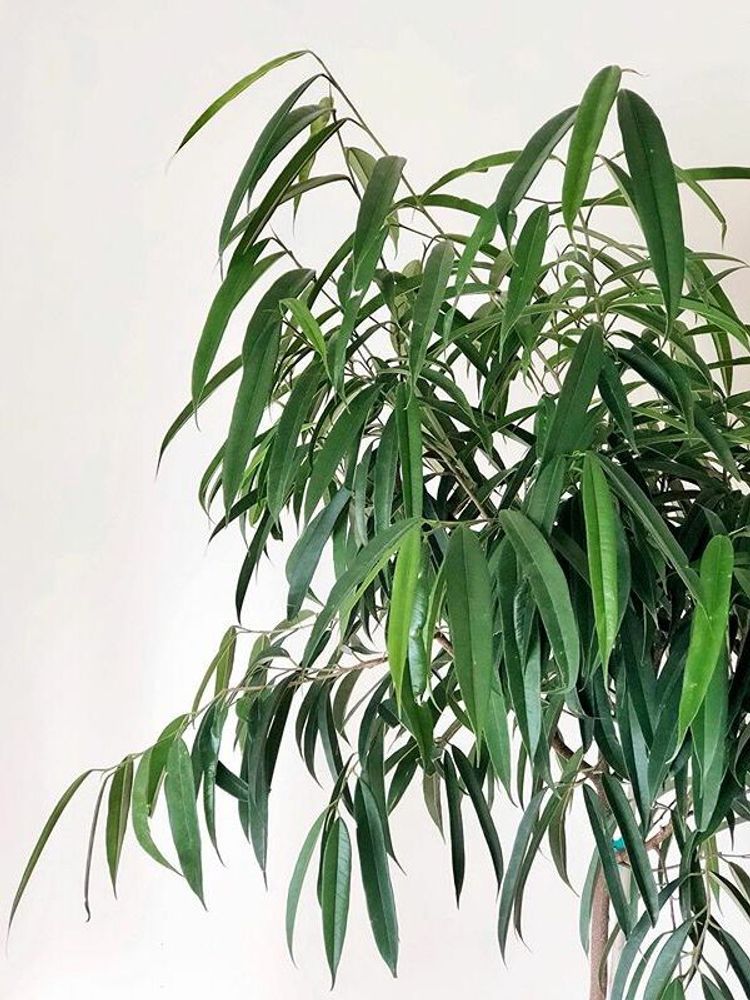
Source www.chooseyourplant.com
Welcome to our comprehensive guide on Ficus Alii care! If you’re a plant enthusiast looking for an elegant and vibrant addition to your indoor space, the Ficus Alii, or Ficus maclellandii, is an excellent choice. With its graceful foliage and relatively easy care requirements, this plant has gained popularity among indoor gardeners worldwide. In this article, we will delve into the essential aspects of Ficus Alii care and provide valuable insights to help you keep your plant happy and healthy.
Native to India, Southeast Asia, and Malaysia, Ficus Alii is a member of the fig family known for its long, glossy green leaves that display a weeping appearance. This evergreen plant can thrive indoors with proper care and attention. So, whether you’re a beginner or an experienced indoor gardener, this guide will equip you with the knowledge and tips you need to excel in Ficus Alii care.
1. Understanding Ficus Alii
Characteristics of Ficus Alii
Ficus Alii features long, slim leaves that can reach up to 10 inches in length. These leaves are a vibrant shade of green and have a unique drooping pattern, adding a touch of elegance to any space. Additionally, Ficus Alii is a fast-growing plant that can reach heights of 6 to 10 feet indoors, creating a stunning vertical element.
Light Requirements for Ficus Alii
Ficus Alii thrives in bright, indirect light but can tolerate some shade. It’s important to position your plant near a window that receives filtered sunlight or use sheer curtains to prevent direct exposure. Insufficient light may cause the plant to experience stunted growth and become leggy, while excessive light may scorch its delicate leaves.
2. Watering and Humidity
Watering Ficus Alii
Proper watering is crucial for Ficus Alii’s health. It’s important to maintain evenly moist soil, but avoid overwatering as it can lead to root rot. Instead, wait until the top inch of the soil feels slightly dry before watering again. During colder months, reduce watering frequency slightly to prevent waterlogged soil.
Humidity Requirements for Ficus Alii
Ficus Alii appreciates moderate humidity levels, but it can tolerate lower levels as well. You can increase humidity by misting the plant’s leaves regularly or placing a humidifier nearby. However, avoid misting if the humidity in your area is already high, as it can promote fungal diseases.
3. Fertilizing and Pruning
Fertilizing Ficus Alii
Feeding your Ficus Alii with a balanced, water-soluble fertilizer during the growing season will provide it with essential nutrients. Follow the instructions on the fertilizer packaging for the correct dosage and frequency. During the dormant months, you can reduce or stop fertilization, as the plant’s nutrient requirements decrease.
Pruning Ficus Alii
Regular pruning promotes bushier and more compact growth in Ficus Alii. You can trim off any leggy or unruly branches to maintain the plant’s shape. Additionally, remove any dead, damaged, or yellowing leaves to enhance the plant’s overall appearance. Remember to use clean pruning shears to prevent the spread of diseases.
4. Detailed Table Breakdown
| Aspect | Details |
|---|---|
| Scientific Name | Ficus maclellandii |
| Common Names | Ficus Alii, Alii Fig, Banana-Leaf Fig |
| Family | Moraceae |
| Native To | India, Southeast Asia, Malaysia |
| Light Requirements | Bright, indirect light |
| Watering | Keep soil evenly moist, but avoid overwatering |
| Preferred Temperature | 65°F to 85°F (18°C to 29°C) |
5. Frequently Asked Questions about Ficus Alii Care
Q: How often should I water my Ficus Alii?
A: Water your Ficus Alii when the top inch of the soil feels dry. Stick your finger into the soil to check the moisture level, and adjust the watering frequency accordingly.
Q: Can Ficus Alii tolerate low-light conditions?
A: While Ficus Alii prefers bright, indirect light, it can tolerate lower-light conditions. However, prolonged exposure to insufficient light can cause the plant’s growth to slow down.
Q: Why are the leaves of my Ficus Alii turning yellow?
A: Yellowing leaves in Ficus Alii can indicate issues such as overwatering, underwatering, or excessive direct sunlight. Ensure you are watering your plant appropriately and providing the right amount of light.
Q: How can I propagate my Ficus Alii?
A: Ficus Alii can be propagated through stem cuttings. Take a 6-inch cutting from the plant’s stem, remove the lower leaves, and place it in a pot with moist potting soil. Keep the soil lightly moist until roots develop.
Q: Is Ficus Alii toxic to pets?
A: Yes, Ficus Alii is toxic to pets if ingested. Keep it out of reach of cats, dogs, and other animals to ensure their safety.
6. Conclusion
Congratulations! You are now equipped with all the essential knowledge to provide excellent care for your Ficus Alii. By understanding its characteristics, light and watering requirements, fertilizing and pruning techniques, you can create the perfect environment for your plant to thrive. Remember to monitor its growth, keep an eye out for any signs of distress, and adjust your care routine accordingly. With proper attention and care, your Ficus Alii will reward you with its stunning appearance and graceful presence in your indoor space.